OSHA Paint Storage Regulations & Guidelines
Like with any dangerous chemicals, OSHA has developed numerous enforceable regulations and OSHA approved guidelines related to proper flammable paint storage. These safety regulations exist to prevent sudden fires and injury through toxicity exposure. Most commercial and industrial coatings and paint fall under two categories: oil-based and water-based. Because oil-based paints contain high levels of solvents per volume, they are classified as flammable liquids. OSHA 1926.152 stipulates that “no more than 60 gallons of Category 1, 2 and/or 3 flammable liquids or 120 gallons of Category 4 flammable liquids shall be stored in any one storage cabinet.” Federal regulations also require that inside storage lockers should be constructed of fire-resistant rated materials for proper paint storage. U.S. Hazmat Rentals line of steel rated paint storage buildings can meet stringent OSHA paint storage regulations.
Why is Paint Storage Regulated?
While seemingly inert in application, all types of paint can be inherently dangerous if mishandled or improperly stored. Oil based paints, for example, contain a large number of hydrocarbons, which are prone to sudden combustion and can cause serious toxicity through human exposure and inhalation. Although latex paints are deemed less harmful than traditional oil-based counterparts, exposure to these chemicals can cause mild irritation to the skin and mouth. Most latex paints are made from a plastic polymer known as acrylic resin. This type of material can become particularly dangerous to human exposure as it may contain trace amounts of ethyl acrylate, which is a known carcinogen. Our flammable paint storage buildings can be retrofitted with metal partitioned walls and unique compartmentalization options that can prevent indirect human exposure to these dangerous chemicals.

Environmental contamination and pollution can also occur if paints are not properly stored in a steel-welded storage locker that is outfitted with an innovative spill sump containment system. Regardless of use or composition, OSHA requires fire-rated protection for large quantities of oil-based, water-based paints, and solvents that fall within a flashpoint of 73 F to 140 degrees F. Failure to abide by OSHA paint storage regulations can subject your company to insurmountable civil penalties and a negative reputation that can forever tarnish a business’s legacy.
Proper paint storage and OSHA compliance help manage safe storage and handling of paints and chemicals components found in paints like:

- Paint – a colored substance applied to a surface which leaves a thin protective coating.
- Varnishes – Wood finishes such as lacquer.
- Solvents – agents that evaporate chemically with oxygen.
- Thinners – use to thin out or clean up oil-based paints.
- Acetone (C3H6O) – solvent used to dissolve paint
- Alcohol – solvent used to change paint texture and comp.
- Paint pigments – controls actual paint coloring
- Mineral Spirits – used as paint thinner
- Oil-based paints – solvent-based paint known for coverage
- Water-based paints – AKA latex. Uses water as a binder
- Acrylics paints – uses acrylic polymer
- Latex (PVA) – water-based paint
- Acrylics polymers – used as paints, sealants, and adhesives
- Alkyd polymers – Resins used in paint and varnishes.
- Epoxy polymers – Epoxy resin used in glue.
- Enamel paints – Produce natural air-dry glossy finish.
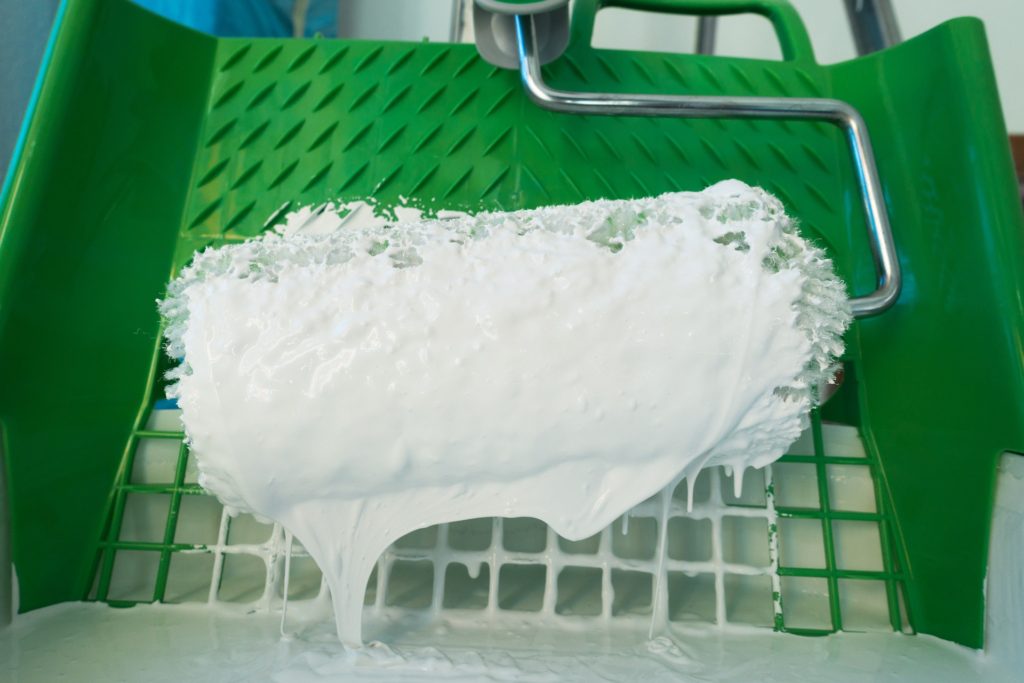
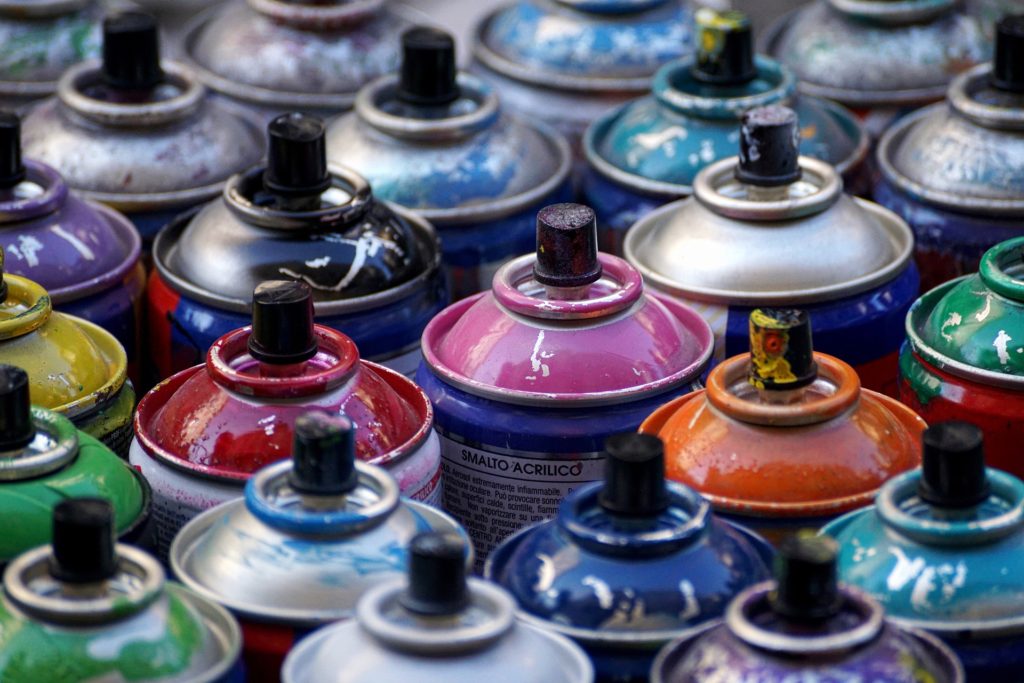
- Phenolic resins – Primarily used in circuit boards,
- Binders – Provides cohesive structural stability in paint.
- Resins – Binder that holds pigments together.
- Xylene (C8H10) – Binding agent used in paints.
- Retarder – used to slow the drying time of acrylic paints.
- Extender – increases paint drying times.
- Pigments – adds color to paint.
- Additives – help with mildew resistance, flow, and leveling.
Is storing paint a fire hazard?
As we’ve said before, oil-based paints contain a large amount of hydrocarbons, which are extremely flammable. Paints should be stored in a climate-controlled environment to mitigate potential fire hazards and to protect the chemical consistency and viscosity of each product. Additionally, OSHA mandates that flammable liquids should be stored in a building that is resistant to fire for a certain period of time. When storing flammable paints within 10 feet of sensitive or vulnerable property, you should consider a U.S. Hazmat Rentals 4-hour-fire rated locker. 4-Hour Fire-Rated Structures are engineered and designed specifically for flammable storage safety certification. Our rentals ensure your company will meet all NFPA and OSHA requirements for your chemical storage needs.
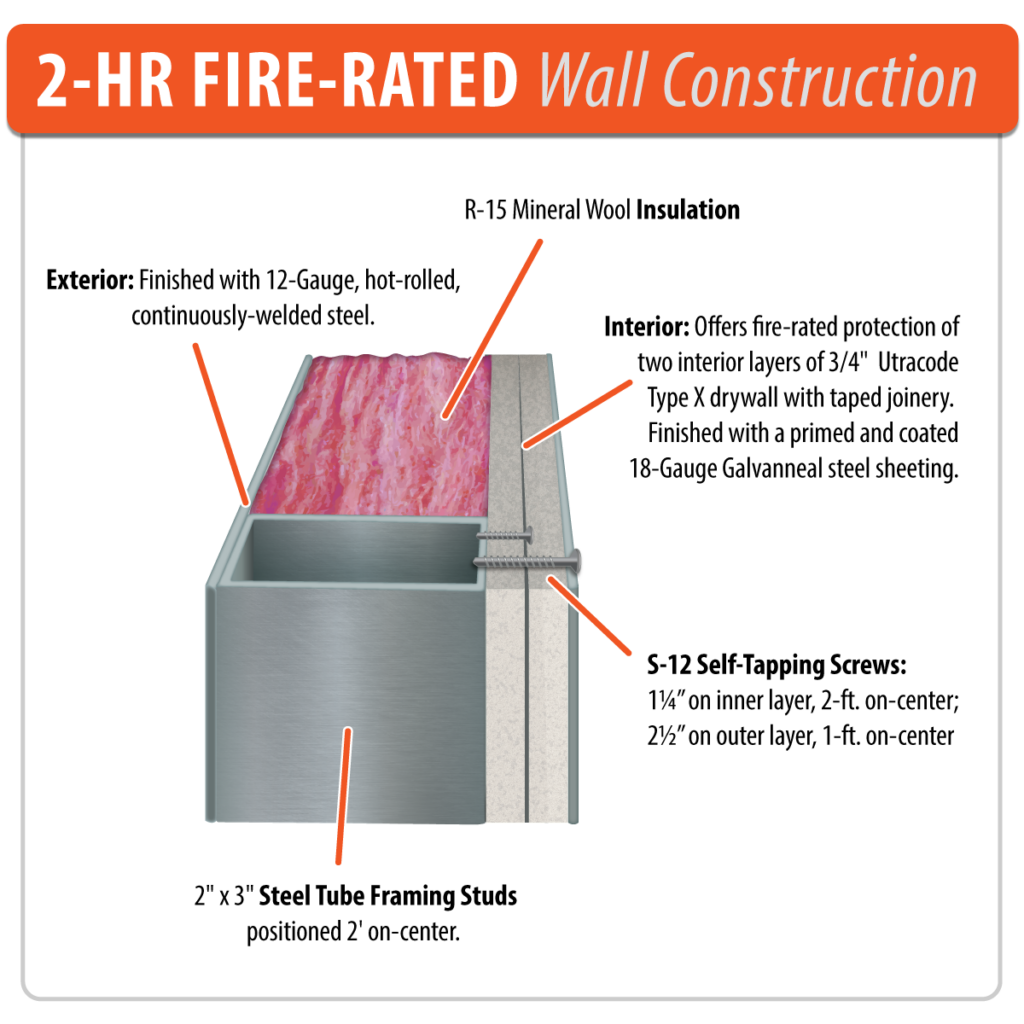
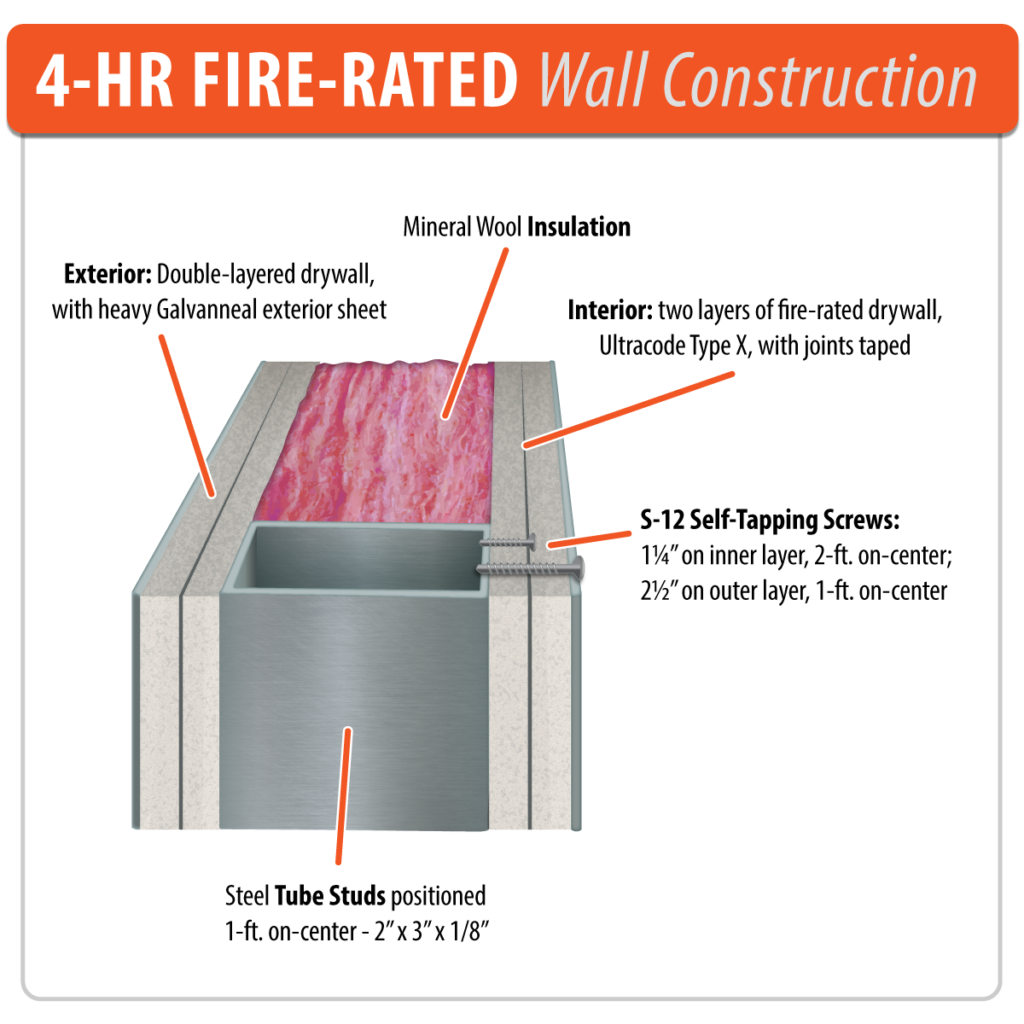
When storing hazardous materials or dangerous chemicals within 10 to 30 feet of sensitive or vulnerable property, you should consider a U.S. Hazmat Rentals 2-hour-fire rated locker. Our Two (2) Hour Fire-Rated Structures are designed for storing flammable liquids, chemicals, and combustible materials as required by the authority having jurisdiction. These buildings are rigorously tested to hold their structural integrity for over two hours of intense internal blaze. They will contain a barrage of excessively hot gases, liquids, and solids. In accordance with OSHA 1926.152 and 1910.106, a dry chemical fire suppression system comes standard on fire-rated paint storage buildings. In the event of a fire, this system can quickly douse flames and prevent the fire from spreading. For chemical storage that is 30 feet or more from property lines, equipment, or personnel, consider non-fire-rated storage lockers or our economical BoxSAFE shipping container storage solutions.
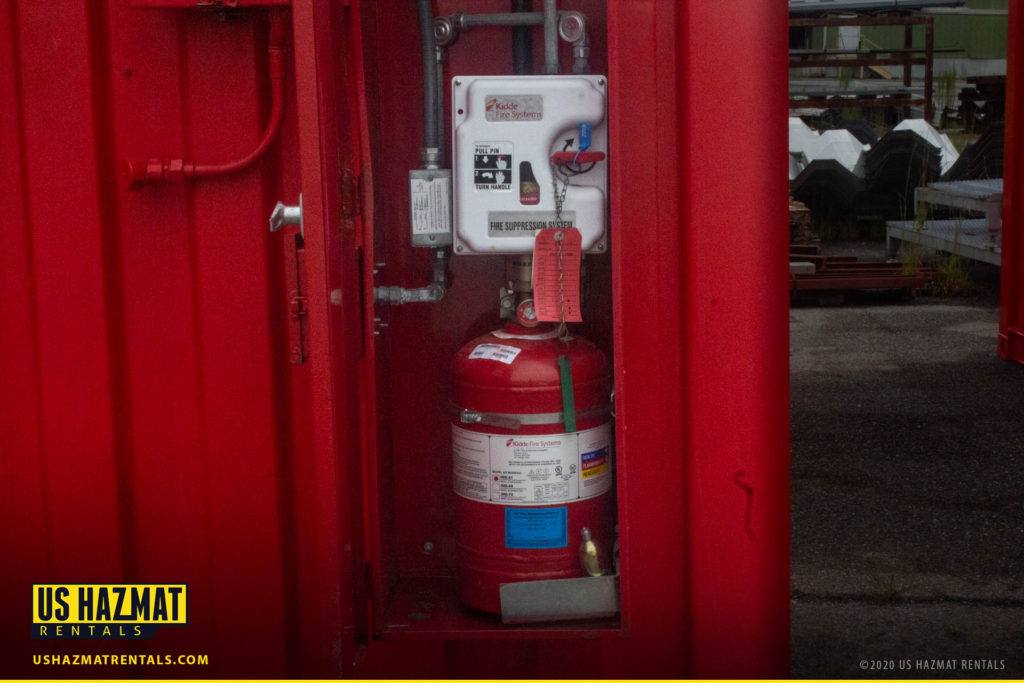
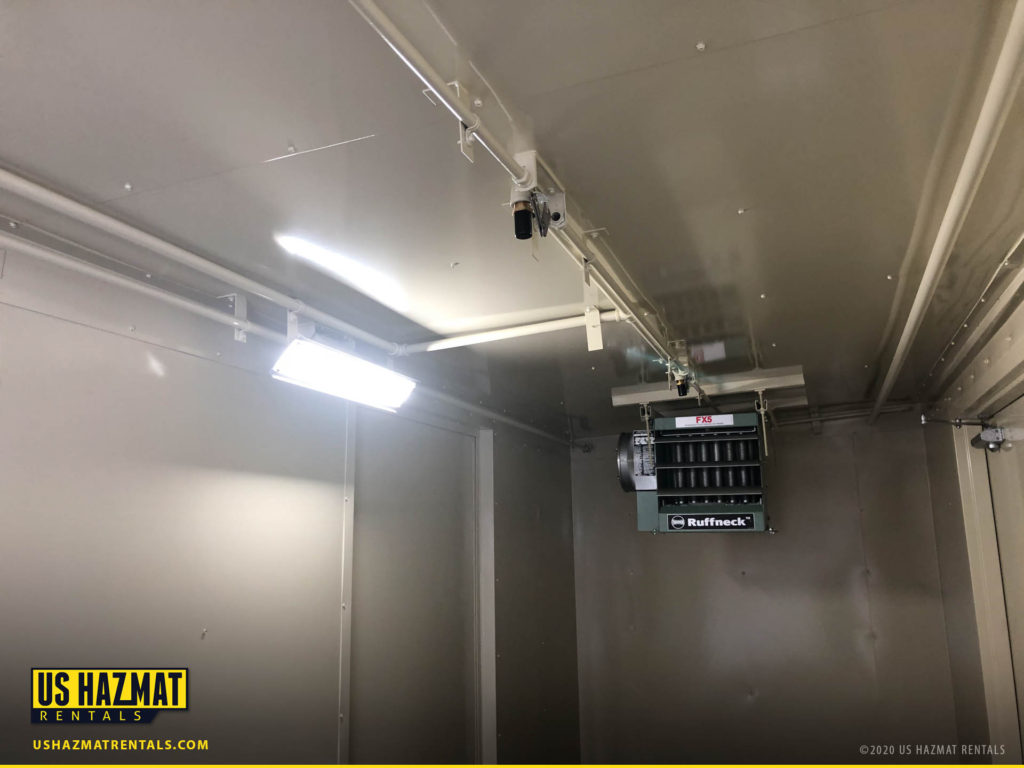
What are Paints Stored In?
Regardless of composition or propensity for sudden combustion, all project managers and support staff should exercise extreme caution when handling and storing paint. Per OSHA 1926.152(a)1 “approved safety cans or Department of Transportation approved containers shall be used for the handling and use of flammable liquids in quantities of 5 gallons or less.” Furthermore, OSHA regulations state “for quantities of one gallon or less, the original container may be used, for storage, use and handling of flammable liquids,” including paints. All paints should be stored in a climate-controlled environment, away from incompatible materials. If you choose to store paint in the same building with other classifications of hazardous materials, make sure these chemicals will not react negatively with one another should both inadvertently come in contact in the spill sump containment system. OSHA also requires that flammable paints should be stored in cabinets that are labeled with, “Flammable-Keep Away from Open Flames” signage.
Just like the bare walls of your potential clients, U.S. Hazmat Rentals has you covered. Regardless of size or application, we have both fire-rated and non-fire-rated paint storage buildings for all dilemmas. Our lockers meet all OSHA paint storage regulations and NFPA guidelines.
Small Container Storage
- Retail Tubes
- Retail 1 quart containers
- Retail 1/2 gallon containers
- Retail 1 gallon containers
Bulk Storage Containers
- Retail 5 gallon pale containers
- Palletized materials
- 55 gallon drums
- IBC liquid storage totesCan store from 180 – 550 gallons
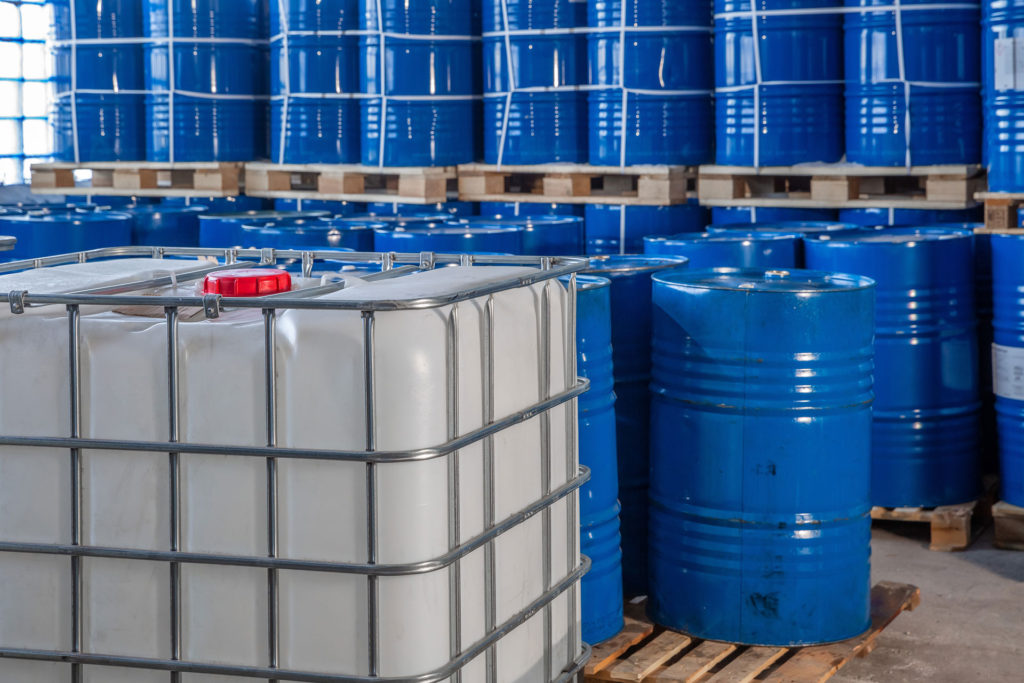
Where Should Paints Be Stored?
All paints should be stored in a cool and dry climate controlled environment. This will help prevent volatile chemical reactions, as well as to protect the viscosity and composition of paint. Mechanical ventilation can prevent the unwanted accumulation of toxic fumes and vapors. Flammable oil based paints that contain solvents or hydrocarbons should be stored in fire-rated structures that are equipped with fire suppression systems. Avoid stacking flammable liquids above eye-level and clear of egresses. Store all paints away from incompatible materials.
Managing and Labeling Your Paint Storage Inventory
Proper management and labeling of a paint storage inventory are crucial for safety and compliance. Here’s how to do it effectively:
- Maintain a Current Inventory List
Keep a detailed and regularly updated list of all paints stored. This list should include the type, quantity, and any pertinent details about each product to ensure everything is accounted for at all times. - Effective Labeling Practices
Each paint container must be clearly labeled with its contents and associated hazard classifications. This will help identify the potential risks quickly and ensure proper handling. - Location and Safety Measures
Store paints in a location that is inaccessible to children and unauthorized personnel. This precaution not only prevents accidents but also limits exposure to those who might misuse the products. - Environmental Control
Ensure that your paints are stored in environments with stable, room temperatures. Avoid areas subjected to extreme heat or cold, which could compromise the integrity of the paint or its packaging. - Preventing Contamination
Store paints at a safe distance from possible contaminants. This includes separating them from substances that might cause chemical reactions or spills. - Proper Disposal Practices
Dispose of unused or expired paints responsibly at designated household hazardous waste facilities. This prevents environmental harm and adheres to local regulations. - Signage and Warning Labels
Ensure that the storage area is equipped with clear signage indicating the presence of flammable materials. Proper hazard classifications should be prominent to alert anyone entering the area.
By following these guidelines, you can manage your paint storage inventory effectively while ensuring safety and compliance with regulations.
How to Safely Dispose of Paints
Disposing of paints safely is crucial to prevent environmental harm and ensure community safety. Here’s a step-by-step guide on how you can do it effectively:
- Identify the Type of Paint
First, determine whether your paint is oil-based or latex. Oil-based paints are considered hazardous, while latex paints are less harmful but still require careful handling. - Look for Local Disposal Programs
Many communities offer local household hazardous waste (HHW) collection programs. These initiatives are specifically designed for the safe disposal of materials like paints and ensure they’re managed by professionals. - Use Designated Collection Sites
Check if local recycling centers have designated days or facilities for paint collection. Companies like Waste Management and Clean Harbors often partner with municipalities to facilitate these events. - Consider Paint Recycling
Some paints can be recycled. Programs such as PaintCare offer recycling solutions by accepting leftover paint at designated drop-off locations. - Dry It Out
If you’re dealing with small amounts of latex paint and can’t access a disposal site, consider drying it out. Mix with cat litter or a commercial paint hardener to solidify it, then dispose of with your regular household trash—only if local laws allow. - Seek Professional Services
For large quantities, consider hiring a professional hazardous waste disposal service. They have the resources and knowledge to manage disposal in compliance with environmental regulations.
By following these steps, you can ensure that paint disposal is handled responsibly, minimizing its impact on the environment.
Paint Storage Solutions
Determining your level of protection for proper paint storage will depend on several factors. When storing flammable paints within 10 feet of sensitive or vulnerable property, you should consider a U.S. Hazmat Rentals 4-hour-fire rated locker. When storing hazardous materials or dangerous chemicals within 10 to 30 feet of sensitive or vulnerable property, you should consider a U.S. Hazmat Rentals 2-hour-fire rated locker. You should also consider our BoxSAFE Storage Containers that are also economical and EPA compliant. These lockers also designed for the storage of chemical drums, totes and palletized materials.
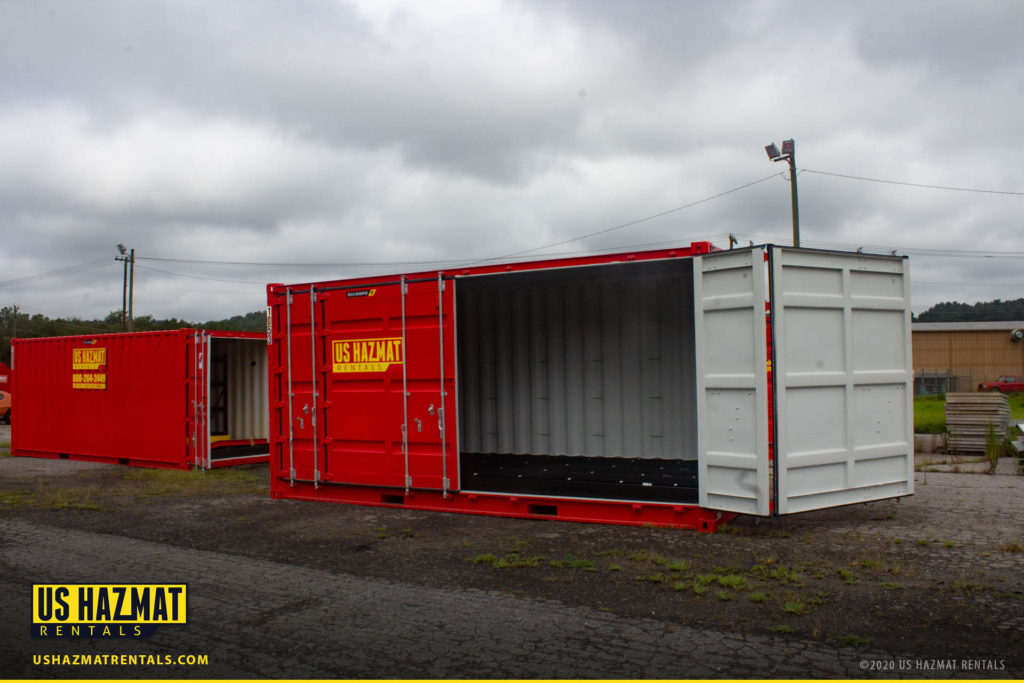
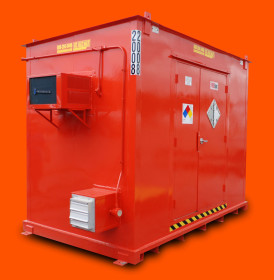
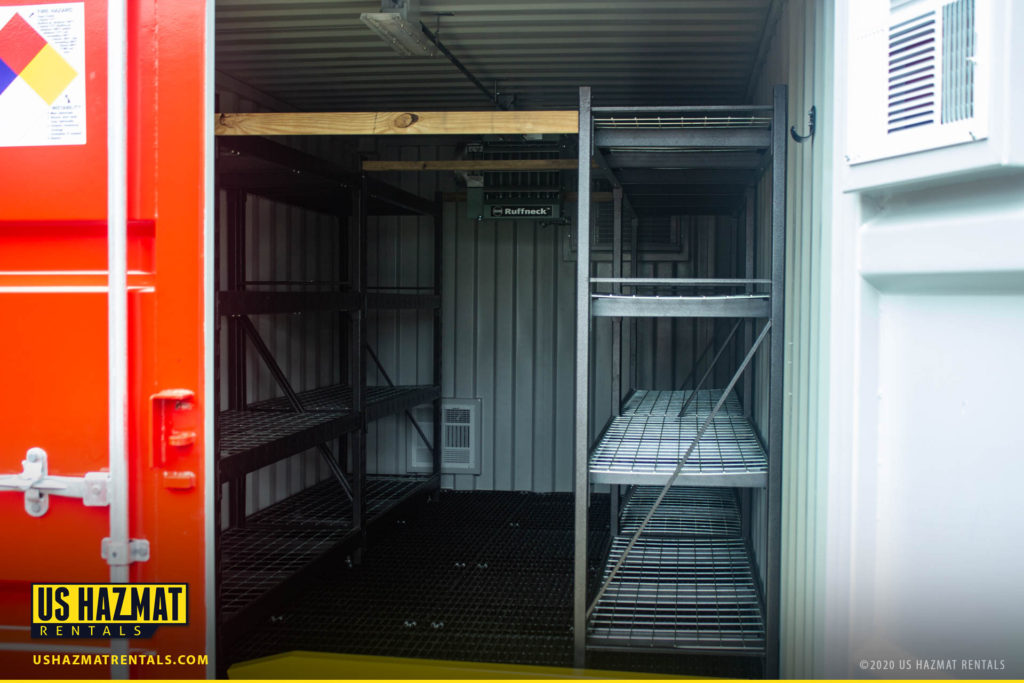
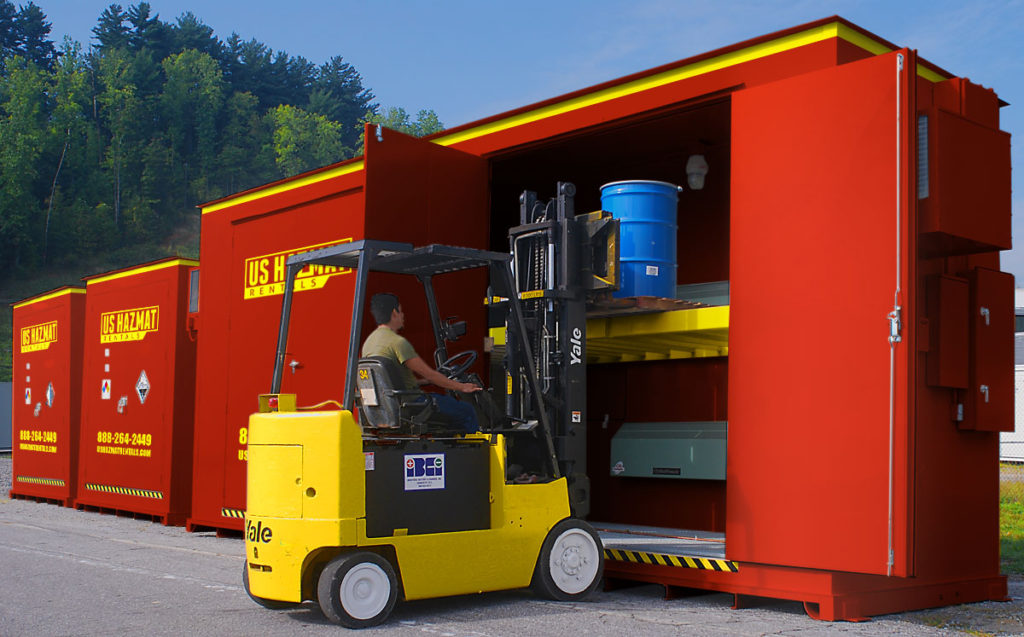
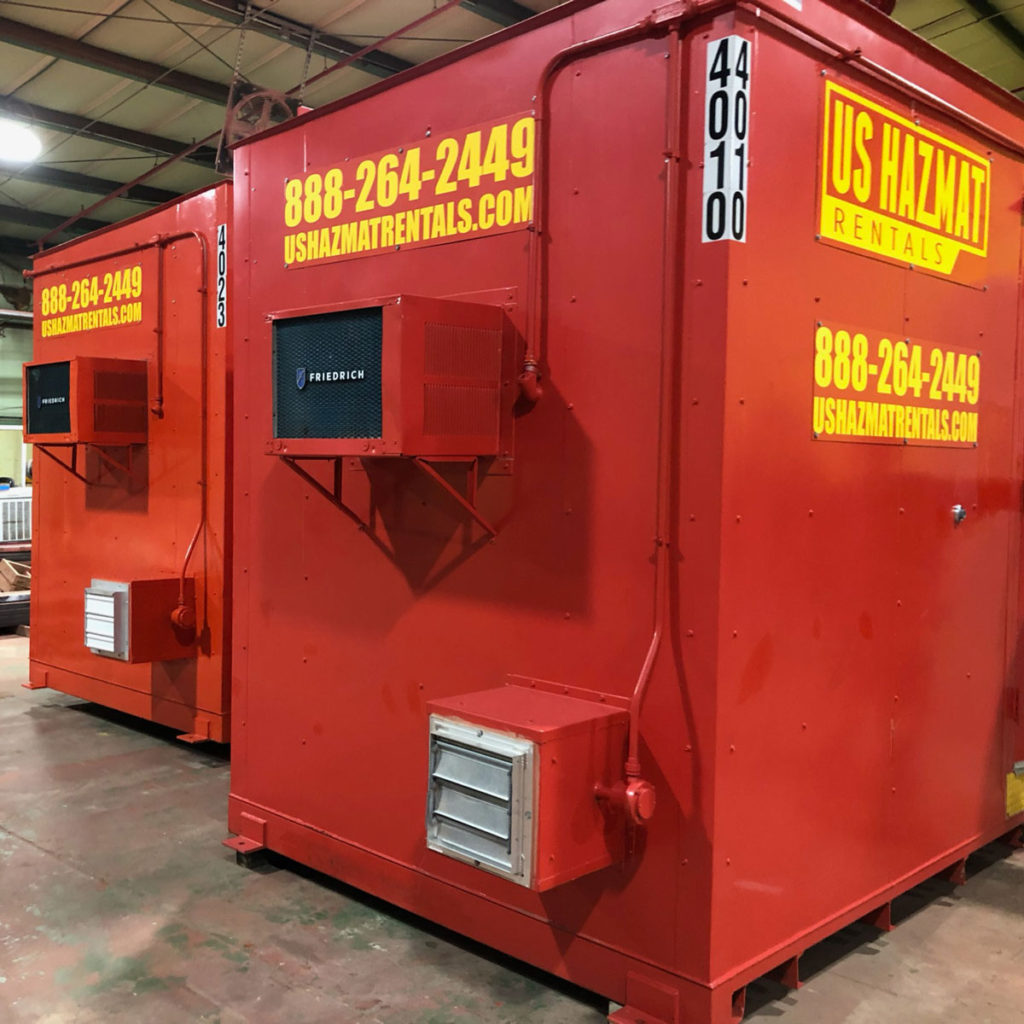
Why Group Paints According to NFPA Hazard Classifications?
Grouping paints based on NFPA (National Fire Protection Association) hazard classifications is crucial for several reasons:
- Safety Enhancement: Paints can vary widely in terms of flammability and toxicity. By classifying them accordingly, you minimize the risk of accidents or hazardous situations. For instance, highly flammable paints should be stored separately to prevent fires, ensuring overall safety.
- Compliance Assurance: Adhering to NFPA standards helps companies comply with safety regulations. This not only avoids legal penalties but also aligns with best practices for chemical storage. Compliance reinforces a company’s commitment to maintaining a safe environment for workers and the community.
- Efficient Storage Management: Proper classification allows for better organization and management of storage facilities. It enables quick access to safety data, which is essential during an emergency. Efficient storage reduces clutter, making it easier to maintain safe conditions.
- Risk Reduction: By understanding and applying hazard classifications, potential risks to health and the environment are significantly reduced. NFPA classifications provide a universally accepted framework, facilitating better communication of risks and precautions.
- Facilitating Emergency Response: In case of an emergency, clearly marked hazard classifications help first responders quickly understand the nature of the materials they’re dealing with, allowing for a faster and more effective response.
In summary, organizing paints according to NFPA hazard classifications is not just a regulatory requirement but a proactive measure to ensure safety, compliance, and efficiency.
Secure Your Paint Storage With A Quality Paint Storage Building
To ensure a quality and durable of a paint storage building, consult with our professional engineers and experienced factory with over 40 years manufacturing experience:
- Custom Design and Construction:
- We have immediate inventory available to properly secure your paints and solvents. Our flammable material storage units utilize features that ensure EPA, OSHA, and NFPA storage compliance and the unique requirements of paint storage, such as secondary spill containment, temperature control, fire suppression, and ventilation.
- Professional Craftsmanship:
- Our professional engineers and experienced welders have the experience it takes to deliver lasting industrial storage buildings. Our buildings are designed for rapid deployment and quick integration into your workflow or job site operations.
- Material Selection:
- We use the highest quality and most durable materials designed to withstand your material handling needs. They will protect your paint from environmental stressors and your staff from potential chemical exposure.
- Certification and Tested:
- Our manufacturing processes have been designed around comprehensive quality assurance tests. Each rental unit is refurbished and tested prior to shipping to a client for use.
- Compliance with Safety Standards:
- Ensure that your storage building meets all local and federal safety regulations. Compliance not only enhances safety but it protects your company against severe financial penalties and potential legal issues.
With US Hazmat Rentals, you can quickly secure a paint storage building to mange your inventory and ensure storage compliance.
The Importance of Safety Data Sheets (SDS) in Paint Storage
When it comes to storing paint safely, the Safety Data Sheet (SDS) is a vital resource. Every chemical, including paints, comes with an SDS provided by the manufacturer. Storing these documents properly ensures that everyone handling these materials has access to critical safety information, particularly during emergencies.
Key Sections of the SDS Relevant to Paint Storage
The SDS includes 16 sections, but some are especially important for effective paint storage:
- Chemical Identification and Uses: This section lists the chemical name and possible aliases, providing clarity about what you’re dealing with. It also details the general purpose of the paint and the manufacturer’s details, which can be essential for verification and sourcing additional information.
- Hazard Information: Understanding the hazards associated with paint is crucial. This part of the SDS reveals potential risks and necessary warning information. Recognizing these hazards helps inform the design of a storage facility that minimizes danger.
- First Aid Measures: Accidental contact with paint might require immediate action. This section offers guidance on first aid procedures for different types of exposure, ensuring that responses to accidents are swift and appropriate.
- Firefighting Techniques: Since many paints are flammable, the SDS includes pointers on firefighting approaches specific to the material in question. This information aids emergency preparedness, ensuring that correct extinguishing methods are in place.
- Spill and Leak Protocols: This segment outlines how to handle accidental spills or leaks. Proper cleanup procedures are crucial to prevent environmental contamination and maintain workplace safety.
- Storage and Handling Instructions: Best practices for safe handling and storage are detailed here, helping to avert mishandling that could lead to accidents or degradation of the paint.
Where to Find More Information
For further guidance on interpreting Safety Data Sheets, the Occupational Safety and Health Administration (OSHA) offers resources that break down each section in detail. You can visit their website or download their comprehensive PDF titled “Hazard Communication Standard: Safety Data Sheets.”

In summary, an SDS isn’t just a technical document—it’s a fundamental tool for risk management and safe storage practices. By fully understanding and utilizing the SDS, you ensure a safer environment for storing paints and other chemicals.
How to Safely Manage Paint Waste
Managing paint waste properly is crucial for both safety and environmental reasons. Whether dealing with liquid or solid forms, ensuring paint waste is stored and disposed of correctly helps prevent accidents and comply with regulations.
Proper Containment
- Storage Facilities: Keep paint waste in designated facilities that are specifically designed for flammable and hazardous materials. These should be equipped to handle the specific risks associated with paint waste.
- Flammability Considerations: Use containers that are approved for storing flammable substances. These containers should be well-sealed and clearly labeled to avoid mishaps.
Best Practices for Storage
- Segregation: Always separate paint waste from other types of waste to prevent cross-contamination.
- Ventilation: Store waste in areas with adequate ventilation to reduce the risk of fumes accumulating, which can be hazardous.
Regular Monitoring
- Inspection: Conduct regular inspections of storage areas to check for leaks or spills, and ensure that all containment measures remain intact.
- Safety Protocols: Train employees on handling paint waste safely and responding to potential emergencies.
Disposal Guidelines
- Professional Services: Utilize certified hazardous waste disposal services to ensure that paint waste is recycled or disposed of in accordance with local and federal regulations.
- Recycling Options: Consider recycling programs that can convert paint waste into reusable materials, which is a more sustainable option compared to disposal.
By following these guidelines, you can effectively manage paint waste to ensure safety and compliance with environmental standards.
Why are Safety Data Sheets (SDS) Important for Paint Storage?
When it comes to storing paint safely, the Safety Data Sheet (SDS) is a vital resource. Every chemical, including paints, comes with an SDS provided by the manufacturer. Storing these documents properly ensures that everyone handling these materials has access to critical safety information, particularly during emergencies.
Key Sections of the Safety Data Sheets (SDS) Most Relevant to Paint Storage
The SDS includes 16 sections, but some are especially important for effective paint storage:
- Chemical Identification and Uses:
- This section lists the chemical name and possible aliases, providing clarity about what you’re dealing with. It also details the general purpose of the paint and the manufacturer’s details, which can be essential for verification and sourcing additional information.
- Hazard Information:
- Understanding the hazards associated with paint is crucial. This part of the SDS reveals potential risks and necessary warning information. Recognizing these hazards helps inform the design of a storage facility that minimizes danger.
- First Aid Measures:
- Accidental contact with paint might require immediate action. This section offers guidance on first aid procedures for different types of exposure, ensuring that responses to accidents are swift and appropriate.
- Firefighting Techniques:
- Since many paints are flammable, the SDS includes pointers on firefighting approaches specific to the material in question. This information aids emergency preparedness, ensuring that correct extinguishing methods are in place.
- Spill and Leak Protocols:
- This segment outlines how to handle accidental spills or leaks. Proper cleanup procedures are crucial to prevent environmental contamination and maintain workplace safety.
- Storage and Handling Instructions:
- Best practices for safe handling and storage are detailed here, helping to avert mishandling that could lead to accidents or degradation of the paint.
Where to Find More Information
For further guidance on interpreting Safety Data Sheets, the Occupational Safety and Health Administration (OSHA) offers resources that break down each section in detail. You can visit their website or download their comprehensive PDF titled “Hazard Communication Standard: Safety Data Sheets.”
In summary, an SDS isn’t just a technical document—it’s a fundamental tool for risk management and safe storage practices. By fully understanding and utilizing the SDS, you ensure a safer environment for storing paints and other chemicals.






